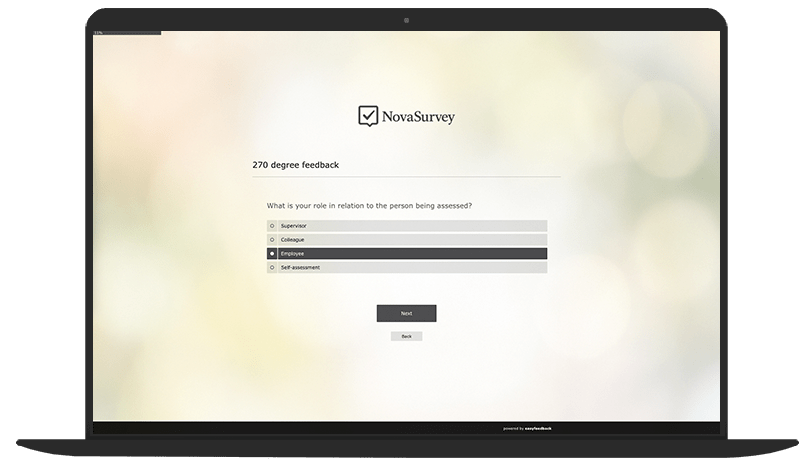What is 270-degree feedback?
270-degree feedback is a structured method for assessing performance and behavior in which feedback is obtained from several relevant perspectives – typically from:
- Line managers
- Colleagues at the same hierarchical level (peers)
- Direct employees
In contrast to the better-known 360-degree feedback, 270-degree feedback lacks the external perspective, e.g. from customers or business partners.
It therefore concentrates on internal relationships within the company.
Objectives of 270-degree feedback
- Improvement of self-perception
- Identification of strengths and areas for development
- Promotion of leadership and social skills
- Support for personnel development measures
- Basis for individual coaching or training measures
270-degree feedback is frequently used, particularly in leadership development, to gain a realistic picture of one’s own behavior in a team context.
Sequence of a 270-degree feedback process
A typical feedback process consists of several phases:
1st phase: Planning & goal definition
Clarification of goals, participants and feedback criteria.
2nd phase: Anonymized survey
Online questionnaire with scalable statements (e.g. on communication skills, decision-making behavior, teamwork, etc.).

3rd phase: Self-assessment of the target person
The person being assessed assesses themselves on the same criteria.
4th phase: Evaluation & comparison
The comparison of self-image and external image reveals differences and areas for development.
5th phase: Feedback discussion & development planning
Results are discussed together and individual measures are derived.
Advantages of 270-degree feedback
- Multidimensional perspective: Instead of relying solely on the opinion of the line manager, a more holistic picture emerges.
- Promotion of the ability to reflect: The comparison between self-assessment and external assessment encourages employees to reflect on their own behavior.
- Increased acceptance: Employees perceive feedback from different directions as fairer and more well-founded.
- Targeted further development: Strengths and weaknesses can be systematically identified and linked to measures.
Challenges and success factors
Despite its advantages, 270-degree feedback also brings challenges:
- Basis of trust: Anonymity and openness are essential for honest feedback.
- Clear communication: The aim and benefits of the feedback must be made transparent in advance.
- Professional moderation: Support from HR or external coaches can help to implement the results constructively.
- Regularity: One-off feedback is of little use. The greatest benefit comes from repeated use and follow-up.
Differentiation from other feedback formats
| Feedback type | Perspectives | Area of application |
|---|---|---|
| 90-degree feedback | Only from line manager | Classic performance review |
| 180-degree feedback | Line manager + self-assessment | Performance reviews |
| 270-degree feedback | Line manager, colleagues, employees | Leadership development, teams |
| 360-degree feedback | Additional external partners/customers | Roles close to customers, management level |
Conclusion
The 270-degree feedback is a powerful tool for personality and leadership development.
It offers a differentiated view of behavior, impact and competencies – directly from the professional environment.
Used correctly, it strengthens the feedback culture in the company, promotes self-reflection and contributes to better cooperation and improved leadership skills in the long term.
At a time when empathy, teamwork and communication skills are crucial success factors, 270-degree feedback is becoming an indispensable tool for modern personnel development.
More on 360 Degree Feedback
- Don’t pillory leaders during 360-degree feedback (with video)
- 360 degree feedback: definition, process, information & tips for implementation
- How to: Conduct 360-degree feedback with easyfeedback
- Survey Template: 360 Degree Feedback
- Survey Template: 90 Degree Feedback
- Survey Template: 270 Degree Feedback




